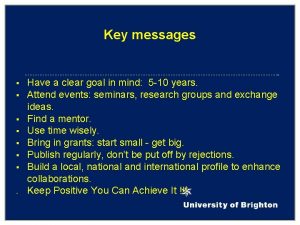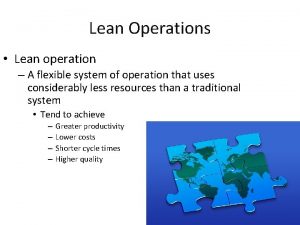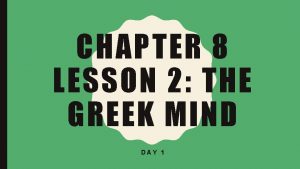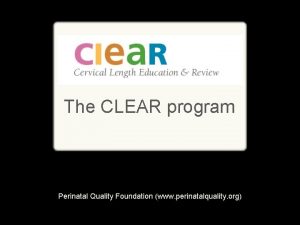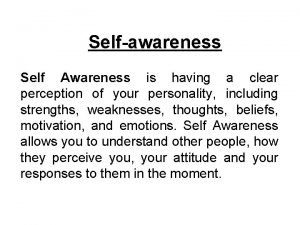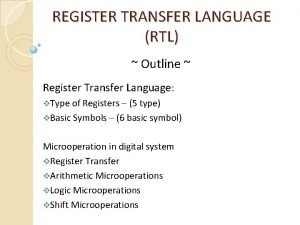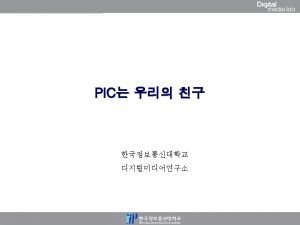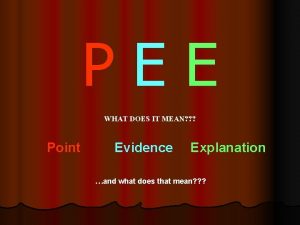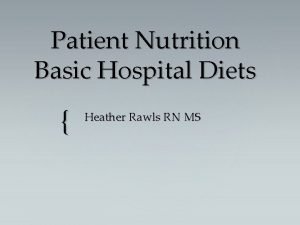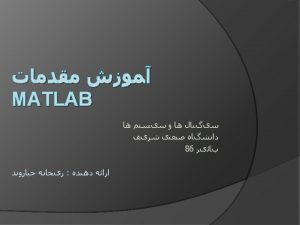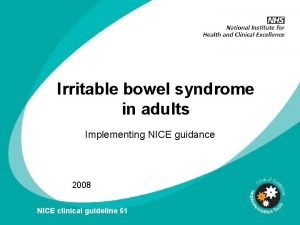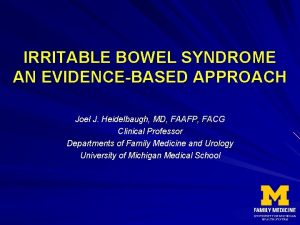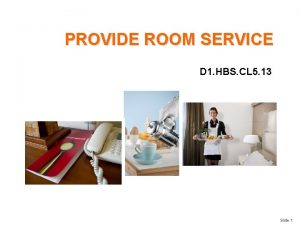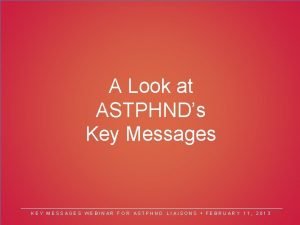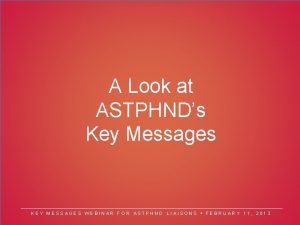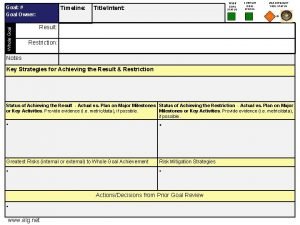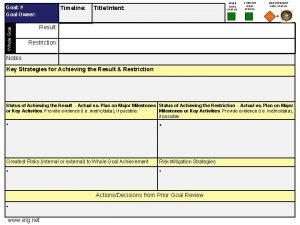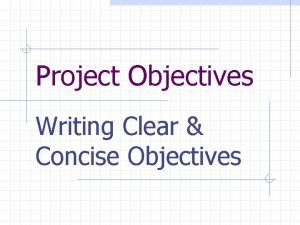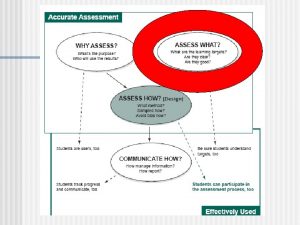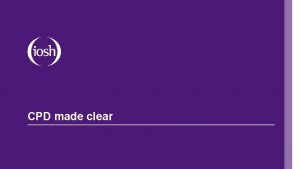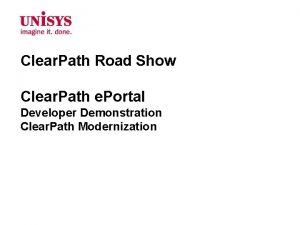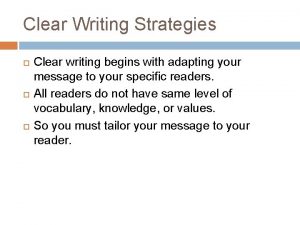Key messages Have a clear goal in mind








































- Slides: 40

Key messages Have a clear goal in mind: 5 -10 years. § Attend events: seminars, research groups and exchange ideas. § Find a mentor. § Use time wisely. § Bring in grants: start small - get big. § Publish regularly, don’t be put off by rejections. § Build a local, national and international profile to enhance collaborations. . Keep Positive You Can Achieve It !!! §

Challenges and Solutions in Growing Research Capacity and Capability In the Workplace

“Research is a high-hat word that scares a lot of people – it needn’t… It is nothing but a state of mind, a friendly welcoming attitude to change. It is the problem solving mind. It is the composer mind instead of the fiddler mind. It is the ‘tomorrow’ mind instead of the ‘yesterday’ mind” (Kettering, 1961)

Research and Evidence In Practice - Range of activities. • Reading, critiquing, sharing and transferring/ implementing evidence into practice. • Focused evidence reviews. • Standardised data collection • Outcome Measurement • Audits • Build appropriate research questions focused on and informed by the outcome of these activities

The Complexities of AHP approaches to Care/treatment We as AHPs often and consistently apply Multimodal approaches to care/treatment eg Education , self management, Rx Approaches etc Doses of each of the included approaches vary as treatment progresses.

Ask Appropriate research questions based on : Data (SDC/Audits, existing evidence • Start small and build • Use appropriate methodological research approaches to answer the question • Research could include: Systematic /narrative reviews qualitative, quantitative, laboratory based, clinical studies (eg case studies, pilot studies, feasibility studies), RCTs • Mixed methods.

The New Researcher’s Unknown Territory Which approaches? Which outcomes? !!! ? ? ? Which methods? What evidence is there? How to prepare ? Which population? Who to collaborate with? How to disseminate findings?

The Researcher Unknown Territory Highs & Lows Excitement Greater Awareness Values Journey Attitudes Intellectual Challenge Beliefs Confidence Opportunities Profile

Barriers to Research § § § § Unfamiliar with the research process. Unfamiliar with the range of methodological approaches Lack of administrative/financial support. Lack of equipment and facilities. Lack of supportive research expertise. Inability to give up revenue producing time. Unwillingness to make research a priority.

Barriers to Research (Cont. ) § § § § Lack of external funding. Lack of consistent patient load. Lack of philosophical support. Unwillingness to give up personal time. Lack of research ideas/questions. Lack of access to literature. Lack of interest. (Ballin et al. , 1980)

The Biggest Barriers Are: - Lack of time And lack of managerial Support.

Influences on research activity (Fitch, Edwards, Smith and Moore, 2012) § § Research culture or lack of it. Individuals’ attributes, e. g. confidence, skills. Political agendas - research in competition with other agendas. Working environment – organisational maturity

Developing a Positive Research Culture § § Understand the current barriers. Identify the potential benefits of a research culture for patients and staff. Ensure that all staff are involved in research to a lesser/greater extent. Embed the research culture in all departments where staff make a contribution.

Enablers/ Fostering a Research Culture Modernising AHP Careers Framework/ High Quality Care for All Data on AHPs in research Shared benefits and application Funding Resources Access to information Research Culture Application/implementation emphasis on “D” in R&D Relevance to practice Support Clinical Academic Training Pathways - NIHR Contracted research time Research capacity/skill Individual AHP Professional bodies Research agenda

Possible Education and Training in HEIs § § Workshops. Seminars Modules (Masters level). Masters in Research. Masters in Clinical Research

Education and Training (Cont. ) Clinical Academic Careers NIHR Fellowships, • Internships • Pre Doctoral fellowships § Doctoral Fellowships, § Clinical Lectureships, § Senior Clinical Lectureships. Bridging funding. See HEE /NIHR ICA website for New Guidance on the above.

Networking, Support and Collaboration Opportunities § § § Internal Uni /Inter. Disiplinary (with Trusts) RDS, CLARC , LCRN External, CAHPR local Hub NIHR Advocates, CAHPR and NIHR AHP Research Champions. Universities- Research Centres, Research Clusters. Local, National, International

Build a Research Strategy • • • Organisational, Departmental, Professional.

Create: • • • Local Research support groups, Innovative think tank, Journal clubs, Collaborations – interdisciplinary, Managerial awareness of the importance of research. Appropriate linkages

Key Messages • • • Value and support all those wishing to research. Value all types of research. Understand that all discussions of research can contribute to practice. Work as teams. Work with support groups /hubs etc Collaborate.

Collaboration makes sense: • • It spreads the load, Increases expertise available, Provides support groups, Speeds up research, Funding more likely, Gives vitality and meaning to the research, Gives higher quality return.

Work together to succeed together

Resources cahpr. csp. org. uk

The role of Physiotherapists in tailoring self-management strategies for MSK problems. Professor Ann Moore CBE Emeritus Professor of Physiotherapy, University of Brighton Director of The Council for AHP Research (CAHPR)

n Tailored intervention n Self management strategy to support the tailored intervention. n Advice re Weight loss, smoking, alcohol and Physical activity. n Education , Advice, Discussion, n Ensure full understanding of both parties. Making Every Consultation Count

Some of the definitions of self-management: 1. “The individual engages in activities that protect and promote health, monitors and manages symptoms and signs of illness, manages the impacts of illness on functioning, emotions and interpersonal relationships and adheres to treatment regimens. ” Gruman, J. , & Von Korff, M. (1996). Indexed bibliography on Self-management for People with Chronic Disease. Washington, DC: Centre for Advancement in Health.

2. “The individual’s ability to manage the symptoms, treatment, physical and psychosocial consequences and life style changes inherent in living with a chronic condition… ability to monitor one’s condition and to effect the cognitive, behavioural and emotional responses necessary to maintain a satisfactory quality of life. ” Barlow, J. (2001). How to use education as an intervention in osteoarthritis. Best Practice & Research Clinical Rheumatology, 15(4), 545 -558.

3. “The day-to-day tasks an individual must undertake to control or reduce the impact of disease on physical health status. At-home management tasks and strategies are undertaken with the collaboration and guidance of the individual’s physician and other health care providers. ” Clark, N. M. , Becker, M. H. , Janz, N. K. , Lorig, K. , Rakowski, W. & Anderson, L. (1991). Self-management of chronic disease by older adults: A review and questions for research. Journal of Aging and Health, 3(1), 3 -27.

For example, in chronic low back pain: • 80% of primary care patients have “non-specific” back pain 1 • 90 million working days lost due to time off work with low back pain 2 • More than £ 1. 6 billion healthcare costs per year 3 1. Burton , A. K. , Balague, F. , Cardon, G. , Eriksen, H. R. , Henrotion, Y. , Lahad, A. , Leclerc, A. Muller, G. & van der Beek, A. J. (2006). Chapter 2: European guidelines for prevention in low back pain. European Spine Journal, 15(S 2), S 136 - S 168. 2. van Tulder, M. , Becker, A. , Bekkering, T. , Breen, A. , del Real, M. T. G. , Hutchinson, A. , Koes, B. , Laerum, E. & Malmivaara, A. (2006). Chapter 3: European guidelines for the management of acute nonspecific low back pain in primary care. European Spine Journal, 15(S 2), S 169 -S 191. 3. Maniadakis, A. & Gray, A. (2000). The economic burden of back pain in the UK. Pain, 84(1), 95 -103.

Patient-centred approach such as self-management can potentially benefit: • Patients and their families • Healthcare professionals • NHS and other service providers • Government and policy makers

Self-management can improve: • Patient’s quality of life • Patient’s knowledge about their condition • Patient’s ability to confidently cope with their condition • Clinical outcomes and reduce reliance on healthcare services • Efficient use of the healthcare resources and professional’s time • Reduction in healthcare costs De Silva. (2011). Evidence: Helping people help themselves - A review of the evidence considering whether it is worthwhile to support self-management. London: The Health Foundation.

• Achieving effective self-management can be challenging • Patients and healthcare providers often have different understandings of the concept of self-management • Ourstudy found four different viewpoints on self-management in chronic low back pain: Exploration of patients’ and healthcare providers’ viewpoints on self-management in chronic low back pain: Q-methodology study. RFPB Funded Mc. Crum, C. A. , Mc. Gowan, J. F. , Stenner, P. , Cross, V. , Defever, E. , Lloyd, P. , Poole, R. & Moore, A. P.

3 Those who do not try to selfmanage in a responsible way 2 should lose their rights to back Successful self-management pain treatments. means coping on your own and not having to rely on health 1 professionals. Self-management means Gathering information Development of the Q-set managing your pain rather than it managing you. Q-sort process Interpretation of the Q-sort The viewpoints

“Changing myself” “Changing what I do” Strong psychological approach, needing a lifestyle / mind-set change Strong pragmatic approach guided by accurate information and practical advice Concerns with the stigmatic perceptions and getting their pain acknowledged Managing the medical uncertainty with the need for ongoing access to healthcare “The others must change” “Not sure what to change”

Some statements about self-management: • Self-management means managing your pain rather than it managing you. • The motivation for self-management is simple: sink or swim. • Self-management is another word for being abandoned by healthcare. • Sometimes I wonder if self-management is not just a way of cutting NHS costs. • Self-management is as much about changing how you think as it is about changing what you do.

There is a need for: • Better communication between patients and practitioners • Increase in the use of educational theory by practitioners • More information available for patients about their condition and treatment approaches • Make every consultation count • More time for communication within each but especially the first consultation

Knowledge Exchange and Implementation n Local, Regional, National and International Presentations to AHPS Patients and Public. Knowledge Exchange workshops n Publications n Discussions with Colleagues and Managers n Incorporate into Pre and Post Registration Curricula n Notify Professional bodies n Discussions with Research Advocates , Research Champions, CAHPR hubs. n Include in personal/professional communications with patients.

The Taxi Driver Story Making Every Consultation Count in Formal and informal settings an Example!


 Aim for clearer messages on global
Aim for clearer messages on global Adaptive denial dbt
Adaptive denial dbt 6 rectangular faces 12 edges 8 vertices
6 rectangular faces 12 edges 8 vertices Clear thinking and writing
Clear thinking and writing Mindmaster portable
Mindmaster portable Wandering mind is an unhappy mind
Wandering mind is an unhappy mind The critical mind is a questioning mind
The critical mind is a questioning mind Key partners example business model canvas
Key partners example business model canvas Key partners key activities key resources
Key partners key activities key resources Skl kov-21 error
Skl kov-21 error The ultimate goal of lean is to build a flexible system.
The ultimate goal of lean is to build a flexible system. Thinkers who created new bodies of knowledge
Thinkers who created new bodies of knowledge Ccisd naviance
Ccisd naviance Liquid diet chart
Liquid diet chart Clear perinatal quality
Clear perinatal quality The clear conquest
The clear conquest Last clear chance doctrine
Last clear chance doctrine Colonoscopy diet sheet
Colonoscopy diet sheet A clear perception of your personality
A clear perception of your personality Edwin morgan message clear
Edwin morgan message clear What is register transfer language? clear it with example
What is register transfer language? clear it with example Punctuation marks make meaning clear.
Punctuation marks make meaning clear. Pic instruction set
Pic instruction set What does a pee paragraph mean
What does a pee paragraph mean Heather childs
Heather childs Andre mcrucker
Andre mcrucker Matlab whos
Matlab whos Medicine to clear stool
Medicine to clear stool Linactolide
Linactolide Sr latch truth table
Sr latch truth table Last clear chance doctrine
Last clear chance doctrine Examples of clear and distinct ideas
Examples of clear and distinct ideas Short sentences effect
Short sentences effect Badminton backhand serve
Badminton backhand serve Dazed and confused cda
Dazed and confused cda The technique of clear writing
The technique of clear writing Icing
Icing Set up tray and trolley
Set up tray and trolley Yellowish liquid part of the blood
Yellowish liquid part of the blood Metodologia crystal
Metodologia crystal Loan performer
Loan performer
